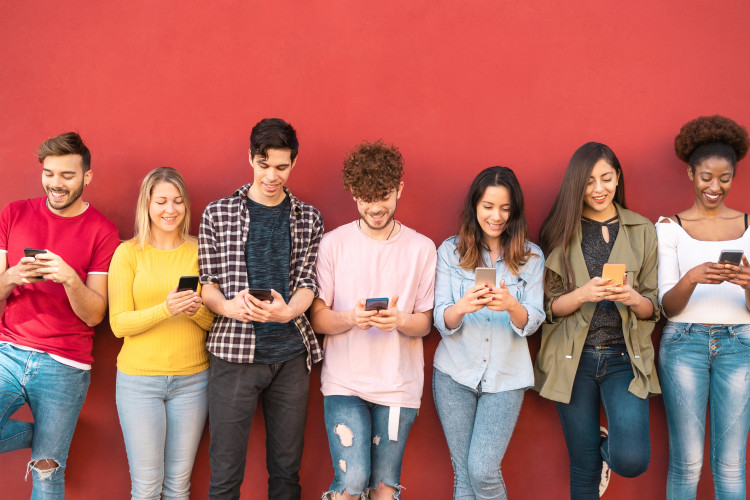Donor Digital Detox: Promoting Nonprofits in a Screen-Saturated World

We know nonprofit marketers and fundraising have lots of challenges in promoting their brands and raising funds. The original promise of the digital age for everyone was that it would democratize access to knowledge and information. To a large extent, it’s done that, but there’s been a cost.
For many people, including donors, it’s led to an oversaturation of information. As a result, it’s now common for people to take digital detoxes, including nonprofit supporters. This topic is something nonprofits should consider in their activities.
Why Digital Detox Matters for Nonprofits
It's fair to say that when we're all hyper-connected. With multiple notifications pinging us on our laptops and mobile devices, the on-demand attention required can lead anyone to burnout and stress. For nonprofits, that could mean donors and volunteers deprioritize or disengage from fundraising appeals or content. So, nonprofit leaders need to understand this reality to support the donor experience.
One of the most fundamental ideas to consider with digital overload is that digital detoxes may mean full digital disconnection, such as during weekends or off-work hours. However, it also means quality over quantity.
So, the content shared by nonprofits should be something that supporters welcome and not dismiss or, even worse, dread (e.g., after continuous urgent fundraising appeals).
It also means keeping the following in mind.
1. Lean into Personalized Communication
Nonprofit marketers and fundraisers should lean into personalization. But it goes beyond subject lines or emails with their names. It means leaning into platforms that provide predictive analytics and other CRM and tech tools to refine donor interests and behaviors. If donors care about a specific program area, then the messaging they should receive should be about that specific area with updates and great storytelling. That helps reduce donor info overload.
2. Go Beyond Online Engagement
Another critical approach nonprofits can use to support donors is to look at more in-person events or experiences. People are naturally inclined to want to make connections, so creative events that are meaningful and foster a sense of community help nonprofits stay front and center. Creating amazing events, such as meet-and-greets with the board and executive director, is an opportunity to have impactful donor experiences.
Related story: 6 Steps to Reimagine a Traditional Donor Engagement Event
3. Survey Donors about Communication Preferences
Another strategy to support donors and information overload is to ask donors about their preferences regarding donor communication. For example, sending surveys and asking donors what they want to see in terms of the frequency and content of communication helps nonprofits provide donors with more valuable and tailored content. By surveying donors, nonprofits can better message and ensure greater donor appreciation.
4. Mindful Messaging
Less is more when communicating with donors and volunteers. So, if your nonprofit team sends emails or shares content to get “as much out there” as possible, it might be time to reconsider. Instead, nonprofits should consider sharing case studies and stories and varying their content — perhaps with team information and anecdotes — to highlight the work. Mindful messaging means sharing value that resonates, not just sharing to share.
Implementing a Thoughtful Digital Strategy
To support donors and volunteers, it’s essential for nonprofits to shift their mindset about content. That shift in mindset starts by auditing the current content marketing strategy and what’s done with it. Consider if too many emails go out and the frequency of social media posts. Think about ways to reduce frequency and increase longer-form and more valuable content delivered through channels like podcasts, videos, workshops, events, etc.
Survey donors and volunteers and segment donors to ensure you’re engaging with them more thoughtfully and with content that interests them. Remember that marketing isn’t about one-size-fits-all. Quality should supplant quantity.
Sure, it might take more time, money and resources, but it’s better for your supporters. Again, think of varying storytelling approaches to catch donor attention.
Finally, look at tech-free efforts to refresh engagements with donors. So, get together with your team and think about how you can engage with donors beyond the digital world. Events or workshops, for example, are ways to connect with donors off the screens. People are busy, but any nonprofit can create an event with people lining up. By reconsidering digital overload, nonprofits can retain donors and support them.
The preceding blog was provided by an individual unaffiliated with NonProfit PRO. The views expressed within do not directly reflect the thoughts or opinions of NonProfit PRO.
- Categories:
- Donor Relationship Management

Kristy Morris is a creative professional in corporate and nonprofit social media advertising and brand strategy. As the chief marketing officer at Funds2Orgs and Elsey Enterprises, she works with a suite of global fundraising brands and manages national campaigns for her clients. She hosts a monthly webinar with Funds2Orgs, teaching nonprofits how to make an impact with their social media strategy. Kristy is a passionate individual that loves nothing more than to help others make an impact in their market and the world.
Kristy also contributes monthly to her NonProfit PRO blog, “Marketing IRL.”











